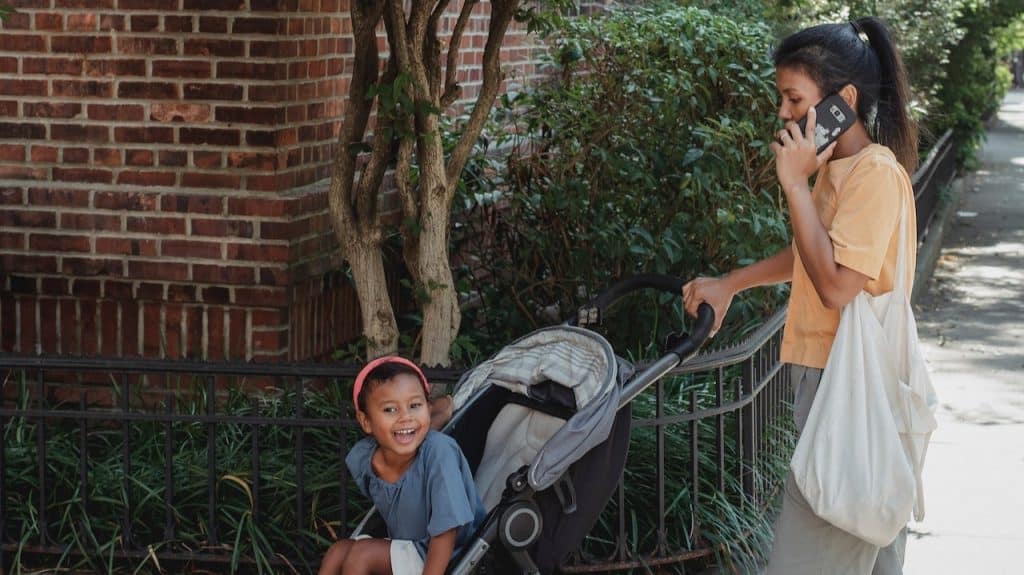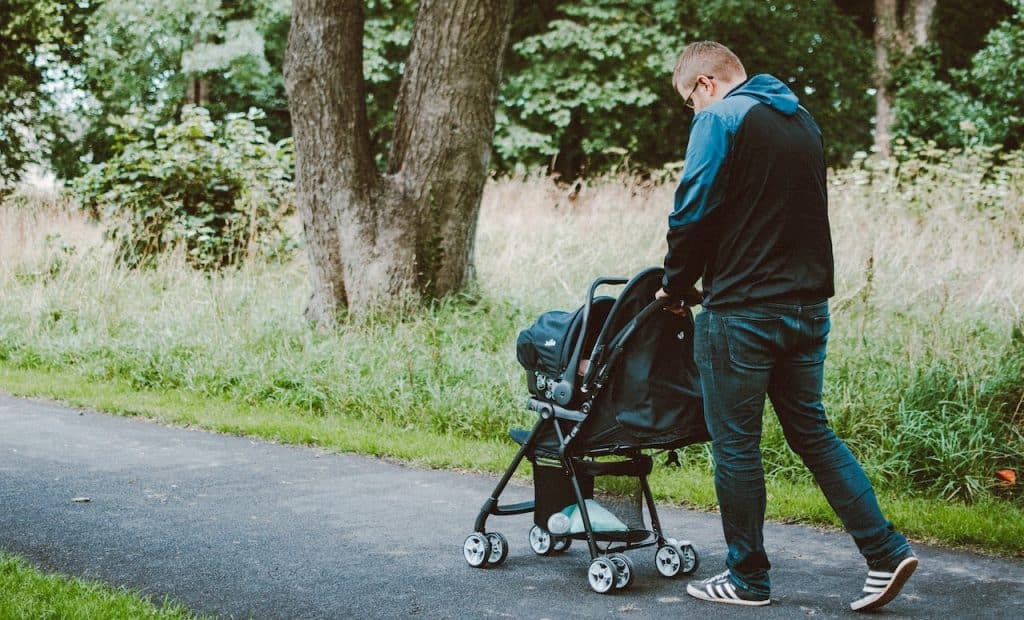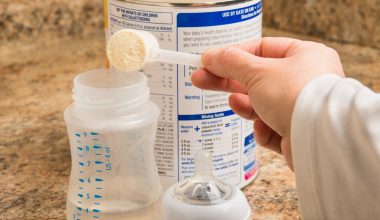As a parent, your highest priority is keeping your child safe. You know to provide your baby with healthy food and a safe place to sleep, and you make sure to purchase safe baby equipment.
Strollers can be a big purchase since they are one of those items that get much use during your child’s early years. They are convenient when traveling with your baby when visiting a carnival or amusement park, when shopping, and when going on walks.
Therefore, when selecting a stroller, you want something that is easy to use, comfortable for your child, and safe. We know that car seats have an expiration date, but do strollers expire?
No, strollers do not expire. Stroller parts typically take a long time to fail, under most circumstances. While they are made of plastic that can become brittle, metal that can rust, and fabric that can become thin and rip, these things will not happen overnight and all at once.
You will be able to keep your child safe without the need for an expiration date because you’ll notice things as they break or need replacement.
Keep in mind, however, that while travel systems do have an expiration date, it is listed for the car seat and not the stroller.
Additionally, just because strollers do not have an expiration date, it doesn’t mean they’ll last forever. Below are a few things to know to keep your baby safe and your stroller in good condition for a long time.
Do Strollers Expire? (Expiration Factors)
-
Are Used Strollers Safe?
Used strollers can be safe to use. However, there are a few things to keep in mind when selecting a used stroller.
Do your homework on the model. Check for recalls, safety concerns, and user reviews. Check the price. Is it truly going to save you money?
Consider the age of the stroller. If it is older than a couple of years, it may not be worth the purchase. Ask for the manufacturing date to figure out its age.
Shop local to avoid shipping costs and to allow you to inspect the stroller in person. Don’t hand over the money without checking its condition first.
Check the stroller’s wheels for air pressure and any wobbling as you push it along. Look at the wheel locks and breaks. Are any attachments included? Is the fabric clean? Are the straps and fasteners intact? Does it look like it’s had heavy use or has been left outside?
Ask if it’s had any falls. Did the owner save the instruction manual? Does it come with a warranty? Also, make sure the stroller fits in your car. You do not want to pay for it before finding out it is a struggle to fit it in.
Also, keep in mind safety standards, such as:
- Does the stroller have options to recline, especially for newborns, since they can’t sit up?
- Can you use your car seat or bassinet on it?
- Does it have locking breaks? Make sure little fingers won’t be able to reach them.
- Does it have a wide base?
- For babies, does it have a five-point harness (straps on both shoulders, hips, and between the legs)?
- For double strollers, make sure the footrest extends all the way across to avoid trapped little feet.
When looking at the stroller in person, make sure to meet in a public place. Don’t be afraid to haggle and be prepared to walk away if the stroller is not to your satisfaction or safety standards.
-
How to Care and Protect Your Stroller
With proper care and maintenance, you can ensure your stroller will last you a long time.
Strollers can get dirty fast! Spot clean or steam clean your stroller often. Leave it in the sun to dry. Some strollers have thick cardboard-like material that doesn’t do well when wet. The fabric may be waterproof, but it doesn’t mean you can soak it to clean it. Be sure to keep your stroller in a dry place, out of the sun when not in use.
It is important to check tires often since they are made of rubber and plastic that can break down over time. Using your stroller on rough surfaces can wear off your wheels and can lose traction.
If the tires take air, check their pressure regularly. It is a good idea to keep a small hand pump and a basic bicycle tire repair kit with you to help in case of emergencies. Replacements for your tires can often be found on the manufacturer’s website.
Axels may begin to squeak over time and may require grease. Also, grease breaks and folding locks when they begin to stick since the manufacturer’s grease tends to wear off over time.
Over time and with regular use, your stroller may begin to wobble. This may seem concerning, but all you may need to do is tighten the nuts and bolts. Start from the ground up.
Keep in mind that threads may wear out over time, and you may need to use Loctite or Threadlocker to keep screws and bolts in place.
-
What to Do When You Are Done with Your Stroller
There are a few things you can do with your stroller, instead of tossing it, when your child no longer fits in it, and you are done with it.
Keeping your stroller for a future baby or passing it on to a friend or family member is an easy way to ensure it is put to good use.
Donating your gently used stroller to charity or a local women’s shelter would make great use of it as it would help a struggling family who may not afford to include a much-needed stroller in their budget.
You can also sell your stroller online or at a local marketplace. Be sure to keep shipping costs in mind and select a public place if meeting the buyer in person.
Trading your stroller at a local consignment store can also be an option. These stores often offer store credit or cash, with the store credit option usually being a bit higher in monetary value.
Additionally, consignment stores typically carry high-quality, clean baby gear, which may be useful to you in finding a gently used item you may need at a lower cost than if purchased brand new.
Some retailers offer trade-in programs for store credit several times a year. However, make sure they take strollers as they are usually car seat focused.
When your stroller is no longer in usable condition, don’t take it to Goodwill or other thrift stores as they won’t be able to use it. Recycling may be a better option.
Some cities offer free recycling, so check locally before you decide to toss it. However, you may need to break it down into its separate components (metal, plastic, and fabric) before they accept it.
Whether passing your stroller along, donating, or selling it, be sure to include any warranty paperwork, instruction manual, and attachments that go along with it.
-
When to Get Rid of Your Stroller
Since strollers do not have an expiration date, there is no set rule on when you should get rid of yours. However, consider getting rid of your stroller instead of passing it on if it:
- Shows Some Wear and Tear. If your stroller is starting to show some tears on the fabric or if the bottom of the seat breaks, it is no longer safe or comfortable for your child.
- Has Damaged Safety Straps. Safety straps are very important in protecting your child when going over bumps, downhill, or when you need to make a sudden stop. They also keep wiggly children from slipping out of the stroller, climbing out of it, or standing on it.
- Wobbles and Cannot be Fixed. Wobbly strollers can be usually fixed. However, if yours continues to wobble after you’ve tried your best to fix it, then it is time to get rid of it as something important may be irreparably broken.
- The Folding Mechanism is Broken. If this is the case, then it is time to get rid of your stroller as it may fold on itself while your baby is in it. Additionally, it may lead to some pinched fingers when trying to open or close.
-
Stroller Age Limit

Although there are no specific age limits to stop using a stroller, it is generally suggested that children three years of age or older should no longer require one. Additionally, most manufacturers set weight limits as high as 75 pounds.
Using a stroller can be very convenient and transitioning out of one can be frustrating at times. However, the benefits of transitioning out of it can outweigh the inconveniences.
At around three years of age, children should be walking and running without issue. Leaving the stroller behind promotes independence and proper motor development. Additionally, walking allows for hands-on exploring, encourages an active lifestyle, and may help them work on their social skills.
Since children are naturally full of energy, walking and running can tire them out and can help fussy sleepers fall asleep faster. Moreover, walking helps them build good habits, strong bones and muscles, and a healthy heart.
Keep in mind there may be a learning curve associated with transitioning out of a stroller. You may find your child running away or refusing to hold your hand when you are out and about.
However, use this change as an opportunity to teach them safety skills, such as walking down the street, stopping and looking both ways at crosswalks, following your lead, and reading cues from you.
You may also notice your child regress and want back on the stroller if he sees younger siblings using one. You may consider using a glider board or a stroller ride board as a solution. These products attach to the stroller so your child can stand or seat on it. This may, however, be short-lived as they may want their freedom back once the novelty wears off.
Final Thoughts
A stroller can be a convenient way to travel, run errands, and take leisurely walks with your young child. While strollers don’t expire, there are a variety of things you can do to keep your child safe and your stroller in good condition for many years until you are ready to transition out of it.


